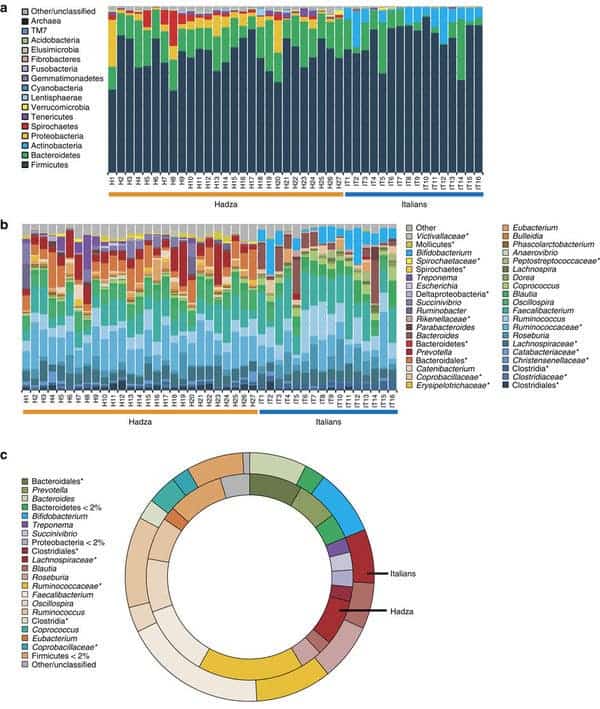
Hadza women roasting tubers.
© Alyssa Crittenden
You could be sitting alone and still be completely outnumbered for your body is home to trillions upon trillions of tiny passengers – bacteria. In fact, there as ten times more bacteria living inside you then cells in the body. Don’t get scared, though. The vast majority of these co-redident organisms are our friends. They help us digest food, provide energy and break down nasty stuff that ocassionaly wind up in our stomachs. As our diet has diversified, however, so has our gut microbiome configuration.
A recent study which looked at what kind of bacteria dwell in the guts of people belonging to a hunter-gatherer community in Tanzania demonstrates this idea, after researchers found a unique microbial profile with features yet unseen in any other human group. The findings could have important consequences in how physicians and scientists alike look at so called “good” and “bad” bacteria.
Humans trapped in time
An international team of reserachers , composed of anthropologists, microbial ecologists, molecular biologists, and analytical chemists, traveled to Tanzania where they sampled individuals from the Hadza hunter-gatherer community. The Hadza are one of the few people left on Earth who have remained isolated and continue to live as their forefathers did since in the Paleolithic. As such, they provide an invaluable window into history, both from an anthropological perspective and a biological one.
The Hadza people’s gut configuration was compared against that belong to that of urban living Italians, representative of a “westernized” population. The results show that the Hadza possess a much more diverse microbiom. Explicitely, there are much more bacteria species living in their guts than in those belonging to westerners.
“This is extremely relevant for human health”, says Stephanie Schnorr of the Max Planck Institute for Evolutionary Anthropology. “Several diseases emerging in industrialized countries, like IBS, colorectal cancer, obesity, type II diabetes, Crohn’s disease and others, are significantly associated with a reduction in gut microbial diversity.”
The bacteria in your gut adapt to the environment

The Hadza microbiota is well adapted for processing indigestible fibres from a plant-rich diet and likely helps the Hadza get more energy from the fibrous foods that they consume.What’s particularly interesting is that the men and women different considerably in the bacteria species they posses, because of their habits and lifestyle. While both men and women share the food they gather (men hunt game and collect honey; women collect tubers and other plants), each sex eats more of the food their target, since they’re around it more on a day to day basis. The researchers call this proof of sexual divison of labor, demonstrated by bacteria diversity which is quite remarkably by itself.
The most striking finding, however, was that the Hadza microbiome, both men and women, contains high levels of bacteria, like Treponema, that in western populations are often considered signs of disease, and low levels of other bacteria, like Bifidobacterium, that in western populations are considered “healthy”. This without the Hadza experiencing any of the negative effects found in the western populace. Therefore, we must redefine our notions of “healthy” and “unhealthy” bacteria, since these distinctions are clearly dependent on the environment we live in.
“Co-resident microbes are our ‘old friends’ that help us adapt to different lifestyles and environments”, says Amanda Henry, leader of the Max Planck Research Group on Plant Foods in Hominin Dietary Ecology. “Through this analysis of the Hadza gut microbiota, we have increased our knowledge of human-microbiome adaptations to life in a savanna environment and improved our understanding of how gut microbiota may have helped our ancestors adapt and survive during the Paleolithic.”
The results were published in the journal Nature Communications.






